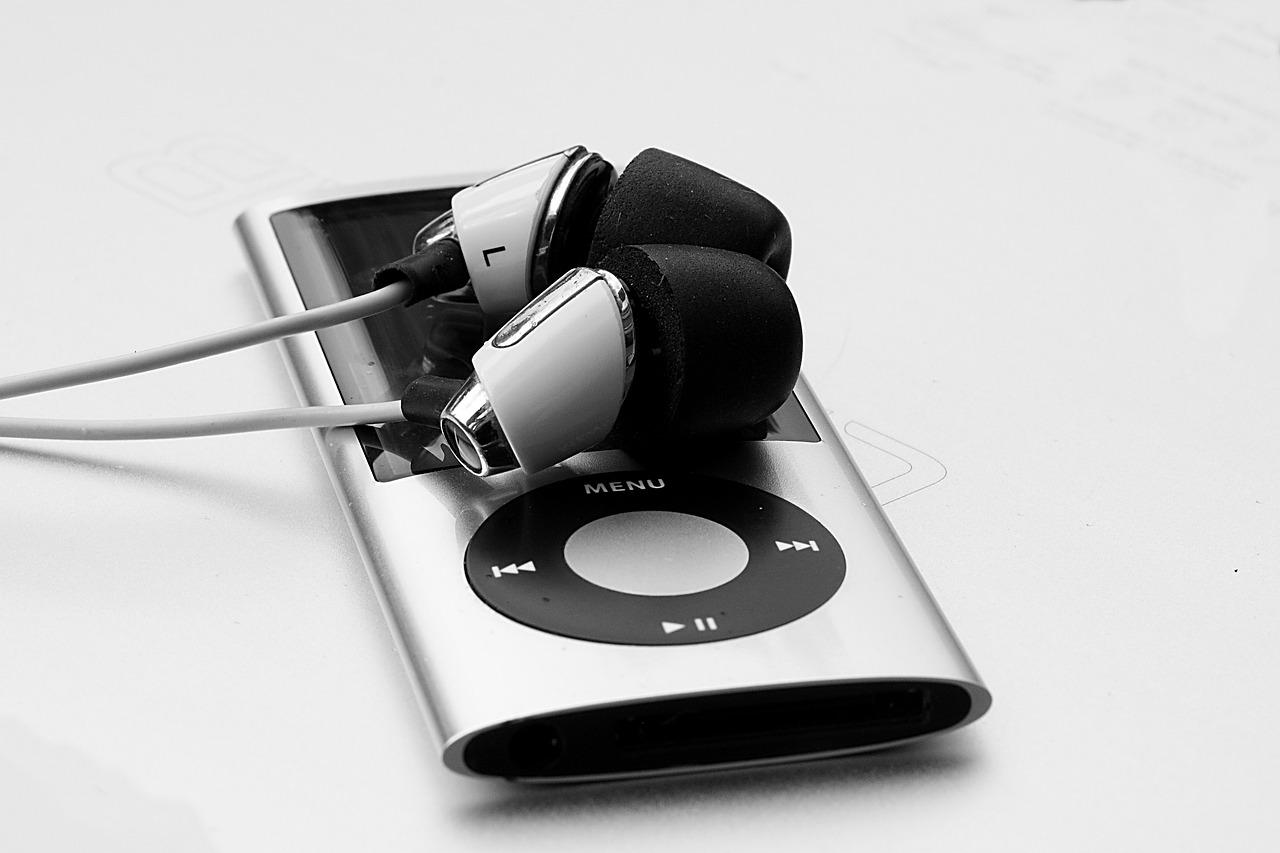In the ever-evolving landscape of digital music, the debate between MP3 and MP4 formats has long been a hot topic among audiophiles and casual listeners alike. As we dive into the world of iTunes, it’s essential to unpack the nuances of these two popular audio formats that dominate our playlists and influence the way we enjoy our favorite tunes. Have you ever found yourself lost in a sea of acronyms, unsure whether MP3s or MP4s fit your needs better? Fear not! This article aims to illuminate the key differences, advantages, and potential pitfalls of each format, ultimately guiding you to make the most informed choice for your listening experience. So, let’s crack open the virtual vault of iTunes and set the record straight on what really matters when it comes to choosing between MP3 and MP4!
Understanding the Basics of MP3 and MP4 Formats
When diving into the world of digital media, it’s essential to understand the differences between the MP3 and MP4 formats, as these two little acronyms often bring a heap of confusion. MP3 is primarily known for compressing audio files, making it the go-to choice for music lovers who want their playlists to take up less space without sacrificing sound quality. Imagine MP3 as that trusty suitcase that fits all your favorite outfits for a trip, minimizing bulk while keeping your essentials intact. This format uses lossy compression, discarding some audio data to achieve a smaller file size, which is especially useful for streaming or downloading tunes on the go.
On the flip side, we have MP4, a more versatile player in the digital format arena. Not only can it handle audio like MP3, but it also supports video and subtitles, making it the Swiss Army knife of media formats. Think of an MP4 file as a stylish backpack that can hold everything from your laptop to snacks—very accommodating! While MP4 also employs lossy compression, it preserves video quality beautifully, making it ideal for movies and shows. Whether you’re listening to a podcast or streaming the latest episode of your favorite series, choosing the right format can enhance your experience. So, the next time you’re faced with the MP3 versus MP4 dilemma, consider what you’re planning to watch or listen to and pick accordingly!
The Evolution of iTunes: How It Changed Music Consumption
The introduction of iTunes marked a profound shift in how we interacted with music. No longer were we tethered to bulky CD players or limited by outdated formats; instead, we found ourselves in a digital wonderland. iTunes streamlined the way music was not just acquired but experienced. Suddenly, loading songs onto a device was as easy as drag-and-drop, turning organized playlists into a personal soundtrack for our lives. Consider this: before iTunes, buying music often meant purchasing entire albums just for a single hit track, but with iTunes, you could handpick your favorites. This meant artists could reach listeners more effectively, allowing for a diverse range of music to thrive in an increasingly competitive market.
But preference in file formats? That’s a game-changer too! While MP3s dominated the scene due to their balance of quality and file size, Apple introduced the superior AAC (Advanced Audio Codec) format with the MPEG-4 container. The result? iTunes users experienced better audio quality without sacrificing storage space. Talk about a win-win! Here’s a simple breakdown of the key differences between these formats:
| Format | Quality | File Size | Compatibility |
|---|---|---|---|
| MP3 | Good | Medium | Widely supported |
| AAC (MP4) | Better | Smaller | Mostly Apple devices |
This evolution wasn’t just about technology; it shaped music culture itself. iTunes gave rise to the era of digital music libraries and paved the way for on-demand streaming. Today’s users expect instant access to millions of songs, a concept that started with iTunes and is now ubiquitous. It’s pretty remarkable to think how one application transformed our relationship with music, ushering in new expectations for access and personalization.

Comparing Audio Quality: Which Format Reigns Supreme
When diving into the world of audio formats, it’s like stepping into a vast ocean, each wave representing a different sound experience. First off, MP3 is the classic workhorse. This format is all about convenience—easy to share, small file sizes, and decent audio quality for everyday listening. Think of it as your trusty old car: reliable and gets you where you need to go, but not exactly the sleekest ride on the block. On the other hand, MP4 brings along a little extra flair with its ability to store more data, including video, and higher quality audio. It’s like upgrading to a luxury sedan; you still get to your destination, but now the journey is filled with lush soundscapes and warmth, making each note shine through.
<p>In the battleground of audio quality, it’s essential to consider a few key players: bitrate, compression, and file size. Higher bitrate generally means better quality, but it also means larger files, which can be a bummer if you're short on storage space. Let’s break this down in a quick glance:</p>
<table class="wp-block-table">
<thead>
<tr>
<th>Format</th>
<th>Bitrate Range (kbps)</th>
<th>File Size (3 min track)</th>
<th>Audio Quality</th>
</tr>
</thead>
<tbody>
<tr>
<td>MP3</td>
<td>96-320</td>
<td>2.8-9.5 MB</td>
<td>Good</td>
</tr>
<tr>
<td>MP4</td>
<td>128-320</td>
<td>3-9.5 MB</td>
<td>Excellent</td>
</tr>
</tbody>
</table>
<p>Each format has its strengths and weaknesses, and what might be super important to one listener may not really matter to another. Your choice could very well hinge on how you primarily listen—whether through earbuds during your commute or on a high-fidelity speaker system at home. So, what’s it going to be? A solid soundtrack for your daily grind or an immersive listening experience that turns every note into pure magic?</p>
Maximizing Your Playback Experience with iTunes and File Formats
When it comes to getting the most out of your listening experience, understanding the differences between file formats in iTunes is crucial. If you want crisp, clear sound that feels alive, you might lean towards AAC (Advanced Audio Codec), which is often hailed for its superior quality at lower bit rates. On the other hand, MP3 (MPEG Audio Layer III) remains a fan-favorite for its compatibility across devices and platforms. While MP3 is like that reliable friend who always shows up to the party, AAC is more like a fresh artist on the block—perhaps less known, but packed with hidden talents that truly shine when you give them a chance. So why settle for less when you can tailor your audio experience to match your vibe?
Moreover, when choosing between these formats, consider what you’re using to play your music. If you’re rocking the latest iPhone or an advanced sound system, MP4 files might just be your golden ticket. They can hold onto video when needed, but what makes them truly special is their adaptability; they often deliver better sound quality than MP3s. Plus, lots of devices and platforms support it, making it a versatile option. Ultimately, your playback experience can be maximized by selecting the format that not only meets your needs but also enhances your enjoyment. Just think of it like cooking: use the right ingredients (or formats) and your masterpiece will delight every time!
The Conclusion
As our deep dive into the world of iTunes and its audio formats comes to a close, it becomes clear that the choice between MP3 and MP4 is not merely a technical one; it’s a reflection of your listening habits and preferences. Just like a painter chooses colors based on the emotions they wish to evoke, your choice between these formats can enhance your experience of music, podcasts, and audiobooks.
So, whether you’re a casual listener enjoying your favorite tunes during a morning jog or a passionate audiophile who meticulously curates their digital library, understanding the nuances of MP3 and MP4 can make all the difference. Ultimately, it’s about finding what fits your lifestyle, your devices, and your ear.
In the vast ocean of digital audio, choose your vessel wisely, and set sail on a journey filled with sound. So grab your headphones, explore your options, and let the music play! Happy listening!





